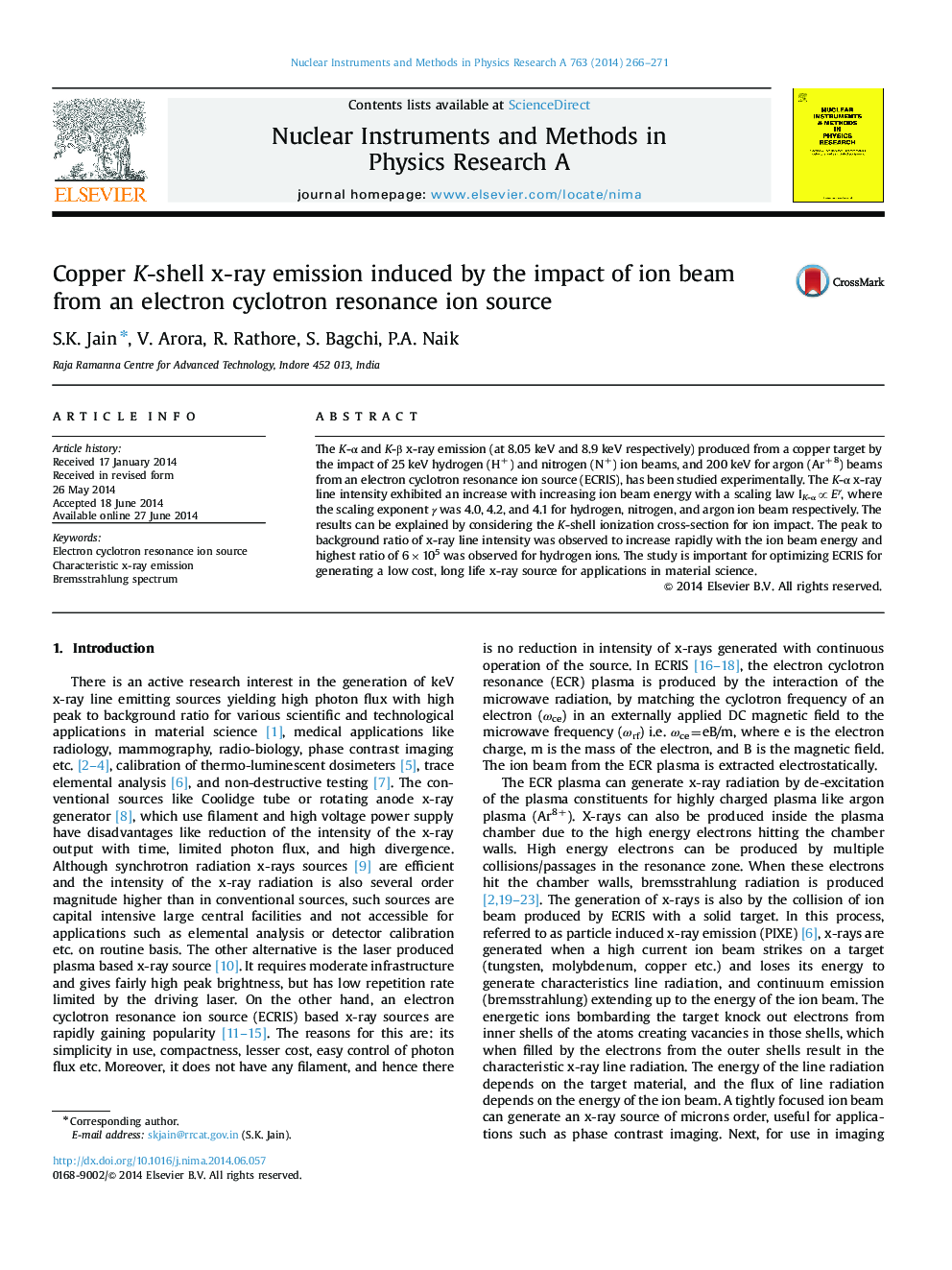| Article ID | Journal | Published Year | Pages | File Type |
|---|---|---|---|---|
| 8175735 | Nuclear Instruments and Methods in Physics Research Section A: Accelerators, Spectrometers, Detectors and Associated Equipment | 2014 | 6 Pages |
Abstract
The K-α and K-β x-ray emission (at 8.05 keV and 8.9 keV respectively) produced from a copper target by the impact of 25 keV hydrogen (H+) and nitrogen (N+) ion beams, and 200 keV for argon (Ar+8) beams from an electron cyclotron resonance ion source (ECRIS), has been studied experimentally. The K-α x-ray line intensity exhibited an increase with increasing ion beam energy with a scaling law IK-αâEγ, where the scaling exponent γ was 4.0, 4.2, and 4.1 for hydrogen, nitrogen, and argon ion beam respectively. The results can be explained by considering the K-shell ionization cross-section for ion impact. The peak to background ratio of x-ray line intensity was observed to increase rapidly with the ion beam energy and highest ratio of 6Ã105 was observed for hydrogen ions. The study is important for optimizing ECRIS for generating a low cost, long life x-ray source for applications in material science.
Related Topics
Physical Sciences and Engineering
Physics and Astronomy
Instrumentation
Authors
S.K. Jain, V. Arora, R. Rathore, S. Bagchi, P.A. Naik,
